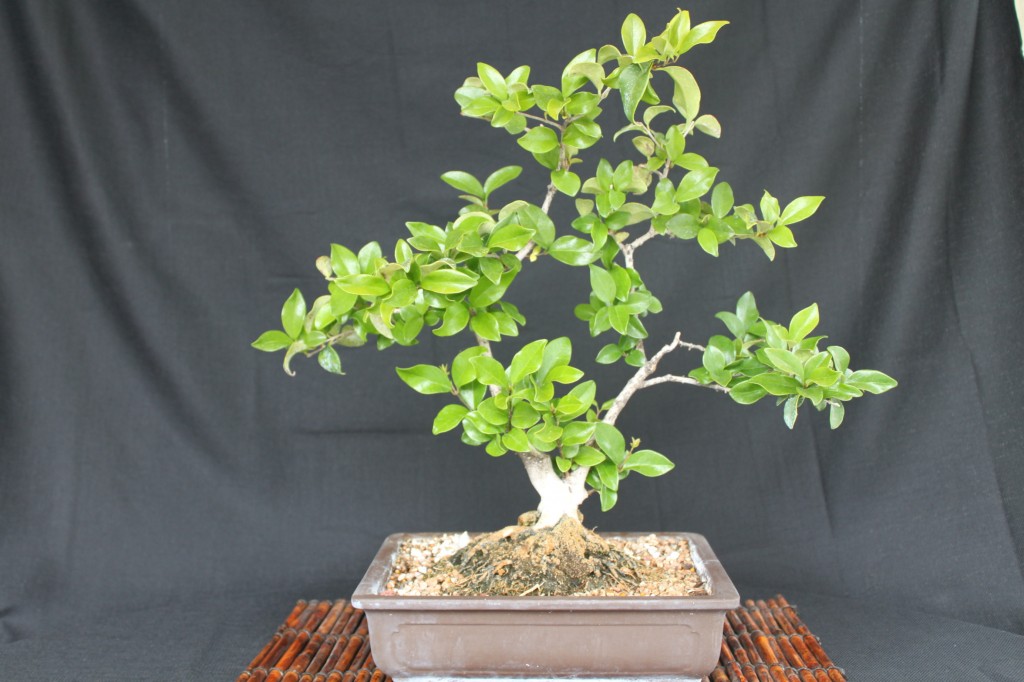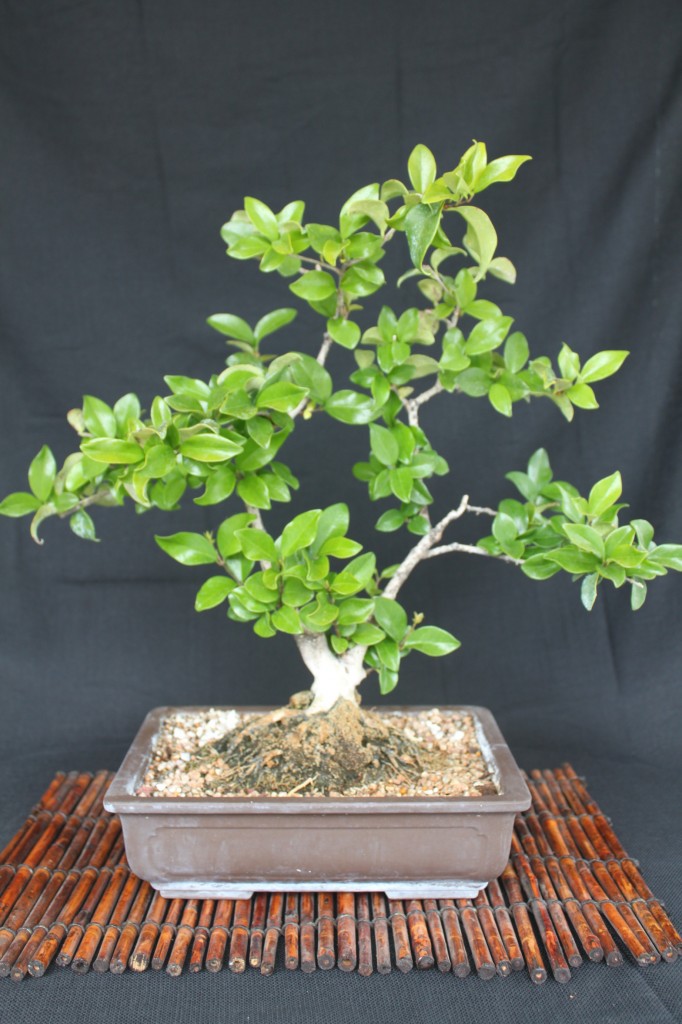Privet Bonsai
Privet Bonsai
Among the choices for beginner bonsai material, Privet (Ligustrum) is often overlooked. This seemingly ordinary shrub, often found in hedges, is very easy to grow as bonsai, and even produces striking sprays of white flowers.
Background:
Ligustrum is a genus of 40-50 species native to Europe, North Africa, Asia and Australia. There are three species commonly used for bonsai: European Privet (Ligustrum Vulgare), Japanese Privet (Ligustrum Ovalifolium), and the species discussed here, Wax Leaf Privet (Ligustrum Japonicum). Privet is a medium sized evergreen shrub that if left alone, grows eight to ten feet high. It naturally forms thick, smooth barked trunks. Spring will bring sprays of white flowers, and Privet will form purplish berries in the fall.
Privet has been known to man since Greco-Roman times. It has traditionally been used as an ornamental plant in hedges. There is a legend that the name “privet” comes from the word “private” but this has been proven incorrect. Although Privet is resistant to pests and diseases and is easily shaped, it has some drawbacks: 1) The berries are mildly poisonous to humans; 2) Privet is poisonous to horses; and 3) In some places, particularly Australia, it is considered a weed and an invasive pest. Common Privet pollen can cause asthma, allergic reactions and eczema in humans, and collection and cultivation of privet is banned in Australia.
Where to get one:
Again, this discussion concerns Wax Leaf Privet, and Japanese Privet: From landscape nurseries in North America or Europe. Privet is also easily collectible if someone you know is removing a hedge. Privet grown in hedges can form fantastically thick trunks. Growing them from seed is ridiculously easy. If a Privet is allowed to bloom and form fruit (berries), soon you will have little Privets growing all around.
What to do with it after you get it:
If you have collected hedging material, then it will have to spend some time in a training pot or box becoming accustomed to container culture. Privet tend to form thick mats if fine, fleshy roots, and if you are lucky enough to collect a hedge plant with a compact root mass, then the accommodation period should only take one growing season. If you cannot find old hedge plants to collect, Wax Leaf Privet is easy to find as a five gallon nursery plant. Put your nursery plant in the ground or in a fifteen gallon tub, and fatten it up for two years or so. Privet grows fast and thickens fast, and you will get the trunk you want quickly. Once you have the trunk you want, or your former hedge plant has adapted to growing in a container, you can use a pruning saw to remove any unwanted secondary trunks or thick branches (do this in the spring) and start wiring out the smaller branches to make your bonsai.
Soil and potting:
Privet are not too particular about their soil. They will thrive in soil that would cause root root in most other plants. That said, they grow best in free draining soil that is about sixty percent aggregate and forty percent organic matter. Aggregate can be decomposed granite, agricultural pumice turface, or diatomite, or fired clay pellets (akadama, orchid pellets, some brands of cat litter work). Organic matter can be any composted potting soil. Once potted, Privet bonsai need to be root pruned and repotted every two to three years for good growth. Privet form thick, dense fibrous roots, and they respond well to root pruning, but this advantage is also a drawback. Once Privet become potbound, they stop growing, as their roots are so dense that they choke off the flow of nutrients.
Siting, Fertilizer and Watering:
Privet do best in a mix of sun and shade, and may do better with more shade than sun. In the wild, they seem to be an understory plant. Privet tend to have high water demands, and dry their soil out quickly when confined to a bonsai pot. Check their soil often, and water often, especially in warm weather. If you use high nitrogen organic fertilizers in mid to late spring and early summer, you will be rewarded with a profusion of leaf growth.
Pruning and Shaping:
Privet respond well to both wire training and the clip and grow method. During the growing season they will issue long shoots with eight to ten pairs of leaves; these should be cut back to one or two pairs of leaves unless you want to wire them to form future branches. New growth lignifies very rapidly and can be wired right after it forms. Privet are basally dominant, and will issue a lot of suckers from the base. These should be pruned off as soon as they appear, as they will divert energy from upper branch growth and development. New growth can be wired in late spring, but watch the wire carefully. Privet grows fast and thickens fast. Fortunately, the bark is soft, and wire scars will heal quickly if they are not too deep.
Styling:
Formal upright is not recommended as it is not natural to the species. Informal styles, multiple trunk styles and groups seem to work best. Cascade is also unlikely for this species, as it is not native to areas with extreme weather.
Closing Remarks:
Wax Leaf Privet is not well known as a bonsai, but it has all the necessary attributes to make a beautiful bonsai – an ability to form thick trunks, dense growth, small leaves, flowers, and interesting fruit. It is also good beginner material, since it is well tolerant of most beginners’ mistakes. It is actually a little surprising that Privet bonsai are not seen more often.



